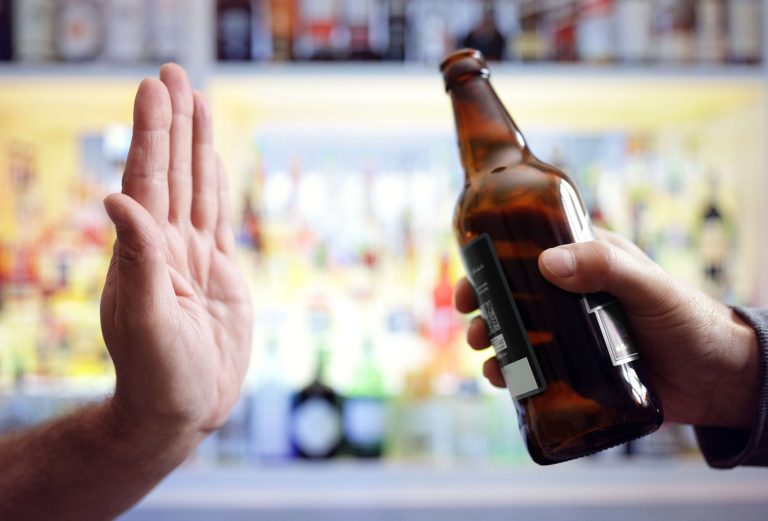A sober living house is a drug- and alcohol-free residence where individuals in recovery live with accountability and support. Unlike rehab, it does not provide intensive therapy but instead offers structure to transition back into daily life. Oxford houses and some sober living homes may allow family visits according to house rules, while halfway houses might have stricter regulations. Staying overnight is rarely permitted, especially in more structured environments like halfway houses. This type of housing residence provides a supportive, structured environment where individuals recovering from substance use disorders can continue to heal while reintegrating into everyday life.
- These facilities provide stability and support as individuals rebuild their lives.
- Though similar, sober living homes are intended exclusively for people graduating from addiction treatment programs and are usually individually owned – offering a considerable level of comfort and privacy.
- The Betty Ford Foundation highlights these homes as critical in helping individuals develop new routines and habits essential for long-term recovery.
- While in recovery, New Life House understands that you have certain things you want to accomplish.
- Funding disruptions could occur at any time, depending on budget cuts for whichever entity owns the house.
Transitioning from Sober Living to Independent Living
- They offer a structured setting with set rules, promoting personal responsibility and accountability.
- Communities’ typical concerns about halfway houses usually stem from a fear of disruptive behavior, lowered property values, excess noise, or additional traffic.
- Sober living home environments are appropriate for those who have recently finished detox or residential treatment programs and require ongoing structure and assistance.
- A recovering individual can live in an Oxford House for as long as he or she does not drink alcohol, does not use drugs, and pays an equal share of the house expenses.
- When you’re looking for a sober recovery home, be sure to ask what’s included in the monthly rate and what is extra.
The directory not only simplifies the search for local AA meetings but also shines a light on the benefits of sober living communities. Through education and support, the AA Meetings Directory fosters a conducive environment for recovery, ensuring individuals have the tools they need for a successful transition into sobriety. Some are on the campus where drug and alcohol addiction treatment is provided, and others are independent homes, apartments or condos.
The Impact of a Drug-free Environment on Relapse Prevention
Halfway houses have specific visitation policies designed to foster an environment conducive to recovery. This isn’t about being picky; it helps maintain security and minimize potential triggers that could hinder progress. We often find ourselves at a crossroads where decisions must be made—decisions that could alter our paths forever. Imagine standing there, but instead of being alone, you have support—a place that helps bridge your journey from addiction treatment toward reintegrating back into society. Residents also have rights within the sober home, including procedures for resolving conflicts, as well as due process protections before eviction. Written policies and rules should outline steps like warnings or mediation, and include a house manager or board review before a resident can be removed.
How Do I Choose the Right Fentanyl Rehab Facility in Colorado?
Halfway houses are generally more structured than sober living homes but less restrictive than residential treatment facilities. They offer a unique blend of independence and support, making them suitable for individuals who still benefit from structured environments but are ready to start integrating into the community. Sober living homes are instrumental in providing the necessary support and structure for individuals striving to maintain sobriety and rebuild their lives post-addiction treatment. They play a crucial role in the continuum of care by addressing the gap between intensive treatment and full reintegration into society. The primary goal of sober living homes is to support long-term recovery and prevent relapse by providing a stable environment that reinforces the coping mechanisms and healthy habits developed in treatment.
Verify your insurance
It is important to check with your provider or insurance company to know what’s covered and avoid any surprise costs. It’s important to note that these costs are approximate and may vary based on the specific sober living house and its offerings. Some sober houses may offer sliding scale fees or financial assistance options to accommodate individuals with different financial capacities. Some sober living houses may also require a commitment to participate in house meetings and adhere to a structured daily routine.
Who Pays for Sober Living Homes?
These studies often focus on factors such as relapse prevention, overall well-being, and social reintegration post-treatment. Peer support plays a vital role in the success of residents in a sober living setting. By living alongside individuals who share similar experiences and goals, residents can lean on each other for encouragement, understanding, and motivation.
What Are Typical Rules and Regulations of Halfway Houses?
These homes offer a safe and supportive environment to continue the recovery process while gradually reintegrating into everyday life. When individuals transition from prison or jail back into society, they often face numerous challenges that can hinder their successful reintegration. A halfway house, also known as a sober living facility or recovery house, provides transitional housing and support services to help individuals navigate this critical period in their lives. In this comprehensive guide, we will explore the purpose of a halfway house, what it entails, who can benefit from it, and the benefits of living in one.
Access to Local AA Meetings and Support Networks
While the term sober living is used to define those who are living in a sober house, it does little to elaborate on what happens in a sober living facility. Those who decide to live at a sober living facility can expect to be in a house or complex filled with other individuals who are on their last steps of recovery from substance abuse or alcoholism. These facilities do not permit any type of substances on the grounds that could potentially be abused, be it mouthwash with high alcoholic content, after-shave or things like cigarettes.
However, research shows that halfway houses do not disrupt their communities and have little impact. A typical participant will live at a halfway house for 3-12 months, with a maximum time limit of 12 months allowed for average residents. Federal prisoners are usually only approved for 12 months, but there is no limit to how long a federal marijuana addiction prisoner may be placed in a halfway home. Peer recovery offers an opportunity for continuous learning and personal growth.
- The history of sober living homes parallels the evolution of community-based recovery programs, providing an alternative to the isolation many face post-rehabilitation.
- Residents of halfway houses are expected to follow specific rules and regulations, which often include abstaining from drugs and alcohol, adhering to a curfew, and participating in house chores.
- RECO Institute recognizes this, offering a holistic treatment program that bridges the gap effectively.
- Residents of halfway houses have typically completed an inpatient treatment program and are looking to continue their journey of sobriety in a less structured setting.
- Many state and federally funded halfway houses receive grants or subsidies to cover operational costs, allowing low-income individuals to access support.
Counseling, workshops, and group therapy sessions further support individuals in developing healthy coping strategies and building resilience. One of the fundamental principles of sober living houses is maintaining complete abstinence from substances. Residents are expected to refrain from using drugs or alcohol to create a safe and supportive environment for themselves and their housemates. This commitment to sobriety is reinforced through regular drug and alcohol testing to ensure compliance with the house rules.
What Is a Sober Living Home? Benefits, Policies & Cost
Sober living homes play a pivotal role in the continuum of care for individuals recovering from substance use disorders. Acting as transitional residences, these homes provide a unique environment to support recovery by offering a blend of structure and independence. RECO Institute distinguishes itself through a comprehensive approach that combines sober living with an integrated support structure, encompassing holistic treatment programs and extensive post-care support. This Delray Beach-based institute understands that the journey of recovery is profoundly personal and fraught with challenges. Thus, it tailors its programs to address the individual needs of each resident, providing them with the tools, skills, and knowledge https://ecosober.com/ necessary to navigate their new lives soberly. From holistic therapies that address mental, physical, and emotional health to practical life skills training, RECO Institute ensures that its residents are well-equipped to face the future.



